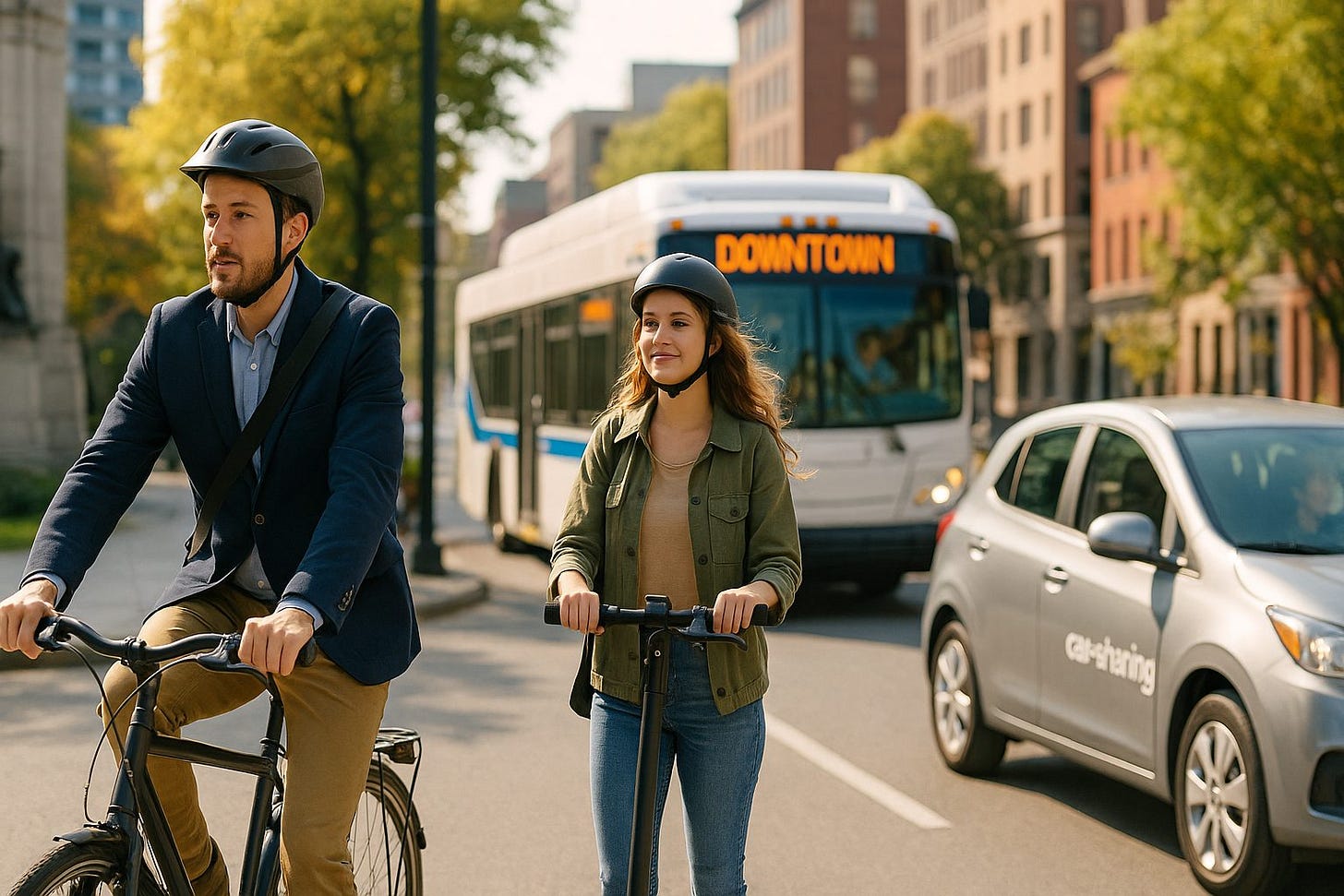5 Budget-Friendly Ways to Go Car-Free (Without Losing Your Freedom)
Unlock freedom, save money, and embrace a greener lifestyle—all without giving up spontaneity.
I think ditching your car doesn’t mean ditching your freedom. It means reclaiming it. 😏 Going car‑free can feel like swapping from a gas‑guzzling tank to a nimble electric scooter—thrilling, liberating, and surprisingly fun. But it doesn’t have to drain your wallet. In fact, it will probably fill it up, once you subtract soaring insurance, parking, upkeep, and—ugh—fuel costs.
We’re diving into five cost‑effective ways to live car‑free with style, smarts, and a sense of freedom intact. You're not giving up your life. You're upgrading it—budget‑friendly style. Let’s roll.
1. Master the Multi‑Modal Commute 💼
Going car‑free doesn’t mean never stepping into a vehicle again. It means picking the right one for the job.
Start with public transport—think buses, subways, trams. According to Alternatives to Car Use on Wikipedia, buses and rail systems still dominate public transit globally. They're cost-effective, efficient, and reduce your carbon footprint.
Then there's the commute mix: bike to the train station, ride the train to the city, and walk the final mile. It’s a win‑win—more exercise, less money spent. And you can even stash the occasional car-share trip (Zipcar, Turo, Maven) for when you absolutely need four wheels. Car‑sharing lets you press pause on ownership—no monthly fees, no depreciation, no headaches.
Why it’s budget‑friendly:
Public transit passes often cost less than fuel and parking.
Bike+train combo boosts your health—saving on gym membership too.
Car‑share gives you flexibility without financial drag.
Also read: 5 Green Transportation Hacks for Parents Who Are Always on the Go
2. Embrace Cycling & Walking 🌿
This isn’t hippie romanticism—it’s practical, healthy, and cheap. Forums and blogs are full of car‑free converts praising biking. One Reddit commuter says:
“The commute to and from my work is usually my favourite part of my work day.”
Cycling and walking are free, fun, and mood-lifters. They also bypass traffic, save you from the daily grind, and chip away at city pollution. As Ride Together Pierce points out, alternative commuting “can benefit not only the environment but also your health and finances”.
Plus, the “Park & Pedal” model lets you drive just a few miles to a lot-less-crowded lot, then cycle the rest—mixing convenience and fitness.
Why it’s budget‑friendly:
Zero gas costs.
Tracks mount easily on budget bikes.
No gym required—you get your workout en route.
3. Use Shared Services & Rideshares On Demand
Forget owning; think using as needed. Car‑sharing platforms, ride‑hailing apps, and micro‑mobility services fill in those rare gaps.
Web tips from GoGet (Australian but wise globally) highlight tools like Citymapper, Lime, Beam, Didi, and Uber—powerful allies in a car‑free lifestyle.
Rideshare apps like Uber and Lyft offer cost savings with shared rides or off‑peak pricing—as AARP notes organizing group rides during lower-demand times is smart.
And for occasional errands, leverage Zipcar or Turo. You only pay for the time and miles—no long-term cost to tie you down.
Why it’s budget‑friendly:
No capital outlay or monthly payments.
Use only when needed, keep flexibility.
Ride‑share promos/carpooling availability reduce costs further.
4. Strategize Your Living Location & Lifestyle
The best way to go car-free? Live where cars are optional. Think walkable suburbs, transit-friendly zones, or “15‑minute cities.”
Urbanist Wikipedia entries say car‑free movements support communities where housing, shopping, work—even schools!—are in walking distance. That’s not just airy‑fairy idealism—it’s budget reality.
Car‑free planning tips from Better Cities blogs highlight health, money savings, and reduced stress all following ditching the car. AARP’s car-free guides even mention municipal communications and commuter benefits encouraging transit and ridesharing.
Why it’s budget‑friendly:
Rent or mortgage might rise slightly, but car costs dive.
Daily errands become walkable—free transit boosts savings.
You’ll spend less on insurance, parking, and vehicle wear.
5. Plan Smart: Apps, Community, & Spare Options
Doing this mindfully keeps stress low and savings high.
Use apps: Google Maps, Citymapper, Transit to time trips and routes efficiently. GoGet recommends them especially.
Join car‑free support groups on Reddit, local Facebook groups, or bike‑commuting forums. Reddit’s subscribers often share gems like:
“A really important component of car‑free living is having access to a rental car company … for the occasional road trip.”
Keep multiple transport tools in your wallet: bike, walking routes, transit pass, ride‑hail credit, occasional car‑share access.
Why it’s budget‑friendly:
Being prepared avoids costly last‑minute decisions.
Community tips help you discover financial hacks or shared rides.
Backup options make sure you’re never stranded—and never overpaying.
Also read: 8 Ways to Make Your Daily Drive Greener—Even If You Can’t Go Electric Yet
Getting Started Checklist ✅
Step - Action - Budget - Impact
Map your daily routes - Walk, bike, transit routes - Identify savings
Test ride services - Try CarShare, Uber, Lime - Find preferences
Community meetup - Join support forums - Insider tips & deals
Budget breakdown - Compare car‑free vs. car-own - See real $ savings
Start small - Car-free days, a week at a time - Build confidence, habits
Wrap Up & CTA
Going car‑free doesn’t mean locking yourself into a world of timetables and compromises. It’s about choosing freedom—freedom from expenses, traffic snarls, and carbon guilt. It’s swapping “I have to drive” for “I get to walk/bike/ride.”
Here’s the invitation: pick one tactic—bike to work tomorrow, test your city’s transit app, or join a car‑share trial. Dip your toes, feel the breeze, and watch your bank balance breathe easier.
Curious which of these five strategies fits you best? Or want help mapping your car‑free blueprint? Drop a comment—I’d love to walk you through it (literally 😉).


